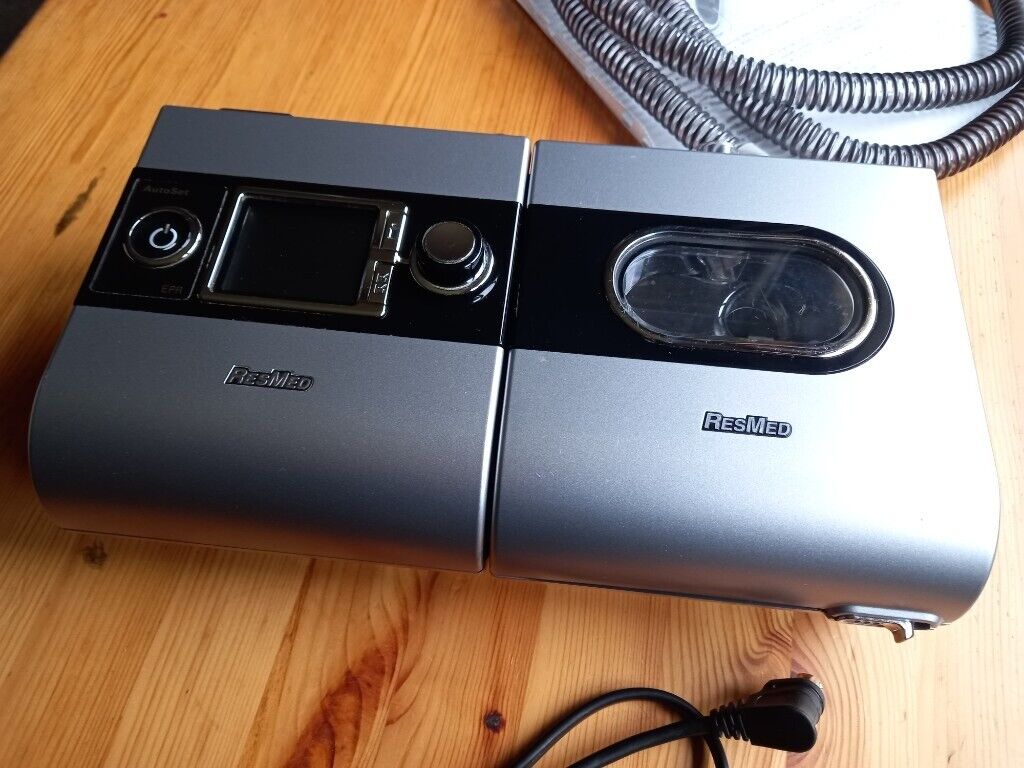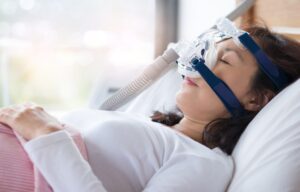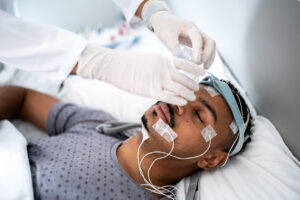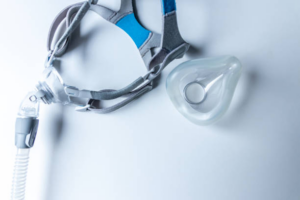Solve these CPAP machines’ problems with these tips

By adopting CPAP treatment, people with sleep apnea may see a significant reduction in their most uncomfortable symptoms. In our last blog post, we outlined the CPAP treatment’s guiding principles. But which conditions are most often treated with this form of therapy?
Research suggests that 60% of those who have used CPAP for more than a few months are compliant. This may be attributed to the fact that many cpap machines users struggle to feel comfortable during treatment. There are, however, straightforward fixes for these problems that might increase the compliance rates of your patients.
Machine Issues
I can’t get my CPAP machines to function.
Ensure that the machine and wall plugs are both securely fastened. Make sure your electrical outlet is operational by checking it. If not, schedule a time to bring your device in so that your cpap provider may inspect it.
My CPAP machine is very loud, and it prevents my bed mate and I from falling asleep.
Unless you are really sensitive to noise (try ear plugs), this would signal a problem since modern devices are almost quiet. Verify the equipment filters. To keep the machines operating well, they should be replaced every month or whenever they become noticeably discolored. If you are using a Bi Level machine, there will be a very tiny audible noise when the pressure switches between the inhalation and exhalation settings.

If you use an AutoCPAP, there will be a little audible noise when the machine adjusts the inhaling pressure. Your machine may have a fault if it is otherwise loud. Make a time to bring your device in so that your cpap provider may inspect it.
I tangle up in my CPAP tube at night.
Consider positioning the tubing behind your head towards the top of your pillow or behind the bed frame serving as the headboard. The majority of cpap manufacturers include a cheap tubing lift to assist with tube placement for better sleep. The compact structure is simple to use and is secured between the mattress and box spring. The lift maintains the tube above the head, improving the range of motion.
My CPAP machines keep falling off the nightstand.
The typical CPAP tube is roughly 6 feet long. Active sleepers who toss and turn throughout the night are more likely to yank on the machine’s tubing and knock it off the nightstand. The majority of cpap vendors provide tubing in 10-foot lengths, which gives patients additional mobility—especially when used in conjunction with a Tubing Lift.
Problems with humidifiers
Dry mouth, dry throat, runny nose, stuffy nose, and sneezing are side effects of CPAP.
All of the aforementioned problems may often be solved with a CPAP humidifier or temperature change. If you need extra moisture, start with the lowest heat setting and increase as necessary. Products like Biotene spray or mouthwash may assist with dry mouth. Ocean or other basic saline spray solutions may be helpful for chronic nasal lining dryness. Both are sold without a prescription at your drugstore. Consult your doctor if the issue continues.
CPAP tubing with water
When the temperature in your bedroom is lower than the air flowing from your machine, excessive condensation may develop in the CPAP tubing. The majority of cpap manufacturers provide cheap, insulating hose covers to address this frequent issue.
Humidifier water chamber has a white or pink coating.
The water chamber is a rapid environment for bacteria to grow. It is advised by all manufacturers to use distilled water. On sometimes, tap water may be utilized. Every morning, rinse the chamber, remove any remaining water, and let it to air dry. Fill the chamber with a mix of 1/3 white distilled vinegar and 2/3 tap water to remove the film. Give it an hour to soak. Rinse with clean tap water, then let it air dry.
Liquid spill
Before adding distilled water to a machine, the water chamber unit must always be removed. Water spilling into the device might impair its internal circuitry, cause damage, and invalidate the warranty.

How can I get used to using a CPAP mask?
You must start off slowly in order to become used to wearing your CPAP mask.
Throughout the day, try putting on the mask while reading a book or watching TV. By just wearing the mask while you prepare food or even just surf the internet, you could sometimes get used to wearing it at night.
If you have become used to how the CPAP mask feels on your face, wear it every time you go to bed at night and even during naps.
The reality is that the fewer regularly you use the mask, the harder it will be to become used to wearing it. Check if the suggested mask and pressure settings are still effective for you after using the device for a few weeks or longer.
My CPAP machines hurt when I use them at night!
When acquiring a new CPAP mask, it is crucial to consult with your doctor and CPAP provider extensively to make sure the mask and equipment are suitable for you and are fitted properly.
Ask your doctor, a sleep expert, or a CPAP provider to show you how to adjust your mask so that it fits you perfectly. To learn more about proper fit, you should also read the product instructions from the manufacturer.
The availability of several mask styles is a plus. Consider the many CPAP mask types and the benefits and drawbacks of each mask to ensure that the one you choose best satisfies your needs.
Do I have an allergy to CPAP machines?
It’s possible that your CPAP machines don’t fit you properly or that they’re making you allergic to them.
Here are some tips for figuring out if you have allergies to your CPAP masks:
- First, put the CPAP masks down, then give your doctor a quick call. An allergy to CPAP masks often shows up the first night you wear the mask.
- Think about how often you wash your face mask. Almost 90% of the time, what seems to be an allergic reaction to CPAP masks (such a bruise on the face or a skin infection) is caused by infrequent mask cleaning.
- Make sure your mask is not an old-fashioned latex version. The majority of CPAP masks now on the market are composed of silicone, while a small number are also constructed of a gel material. They almost all lack latex.
The forced air from CPAP machines drives me crazy.
You may get around this issue by using the “ramp” option on your CPAP machines.
The “ramp” option allows you to start with a low air pressure and increase it gradually over time until it reaches the recommended pressure from your doctor. Additionally, your doctor could adjust the “ramp” function’s pace.
Whether this doesn’t help, find out from your doctor if you may switch to a BPAP machine. But before you decide if this might be a better option for your treatment needs, read our side-by-side comparison of BPAP and CPAP devices.
I get a runny or stuffy nose after wearing the CPAP mask!
First, check to see whether your CPAP machines come with a heated humidifier. A humidifier may often alleviate these symptoms. If your existing CPAP machines does not already have one, think about buying one with adjustable humidification.
Consider using a nasal saline spray before night to prevent your nose from over-drying. Last but not least, make sure your mask fits snugly since one that leaks might dry out your nose.
My CPAP machines make me feel restricted.
Start out by having a positive outlook on your CPAP treatment.
CPAP machines and mask are there to significantly improve your quality of life over time, even if you may not be aware of it now.
Before anything else, keep in mind that successful CPAP treatment sometimes requires tolerance building as you adjust to therapy. Follow our advice to become used to using your CPAP machines. Speak to your doctor or a sleep expert if you need further help adapting to therapy.
- Practice putting on your CPAP machines while you’re still awake. Start by simply pressing the mask to your face without any other accessories. Once you feel comfortable doing that, try wearing the mask with the straps.
- •To become acclimated to the CPAP mask, start off gradually. Try holding the mask with the hose connected to your face without using the straps. Connect the CPAP machine hose, then lower the pressure (with ramp feature turned on). Finally, while still awake, put the air pressure machine and strapped-on mask on. Once you’re comfortable with that, try sleeping with it on.
- Practice some calming strategies. To help you feel less worried about wearing your CPAP machines, you could also attempt progressive muscle relaxation methods. It can be beneficial to try a different kind of mask, such one with nasal cushions, or to buy a mask in a different size.
If your claustrophobia persists, speak with your doctor, a sleep specialist, or a CPAP provider.
I still have difficulties falling asleep even with the CPAP machines on.
This frequent, transient problem is more likely to affect patients who are just beginning CPAP therapy. After you’ve followed our advice on adjusting to your CPAP machines, test out the “ramp” feature.
Make sure you practice good sleep hygiene by exercising often and avoiding caffeine and alcohol before bed.
Why does my mouth feel dry when I use my CPAP machines?
Mouth breathing at night or sleeping with your mouth open might worsen the effects of CPAP. A chin strap may help keep your lips together when using a nasal mask, reducing air loss.
But once again, make sure you’re using the right mask, and experiment with your CPAP machine’s heated humidifier settings to see if it makes a difference.
More to read: Rare CPAP machine tips that are quite helpful



